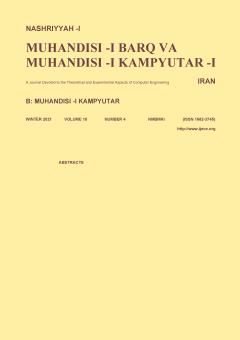-
-
List of Articles
-
Open Access Article
1 - An Intelligent Novel Hybrid Live Video Streaming Method in Mesh-Based Peer-to-Peer Networks
Naghmeh Farhadian behrang barekatain Majid Haroni Behzad Soleimani Neysiani -
Open Access Article
2 - An Adaptive Multi-Objective Clustering Algorithm based on Auction_Prediction for Mobile Target Tracking in Wireless Sensor Network
Roghieh Alinezhad Sepideh Adabi arash Sharifi -
Open Access Article
3 - SAHAR: An Architecture to Strengthen the Control Plane of the Software-Defined Network Against Denial of Service Attacks
mehran shetabi Ahmad Akbari -
Open Access Article
4 - Green Cloud Computing with Reduced Energy Consumption in Live Migration Prioritizing Services
Mohammad Rostami Salman Goli -
Open Access Article
5 - Grayscale Images Deblurring Using Robust Optimization Problem in Uncertainty Conditions in Blurring Model Parameters
Zeinab Mohammadi Ebrahim Daneshifar Abbas Ebrahimi moghadam M. Khademi -
Open Access Article
6 - A Feature Selection Algorithm in Online Stream Dataset Based on Multivariate Mutual Information
Maryam Rahmaninia Parham Moradi -
Open Access Article
7 - Scheduling of Scientific Workflow Applications in Multi-Cloud Environment Using Cuckoo Search Algorithm
S. Mohammad Latif PourKarimi Somayeh Abdi
-
The rights to this website are owned by the Raimag Press Management System.
Copyright © 2017-2026







